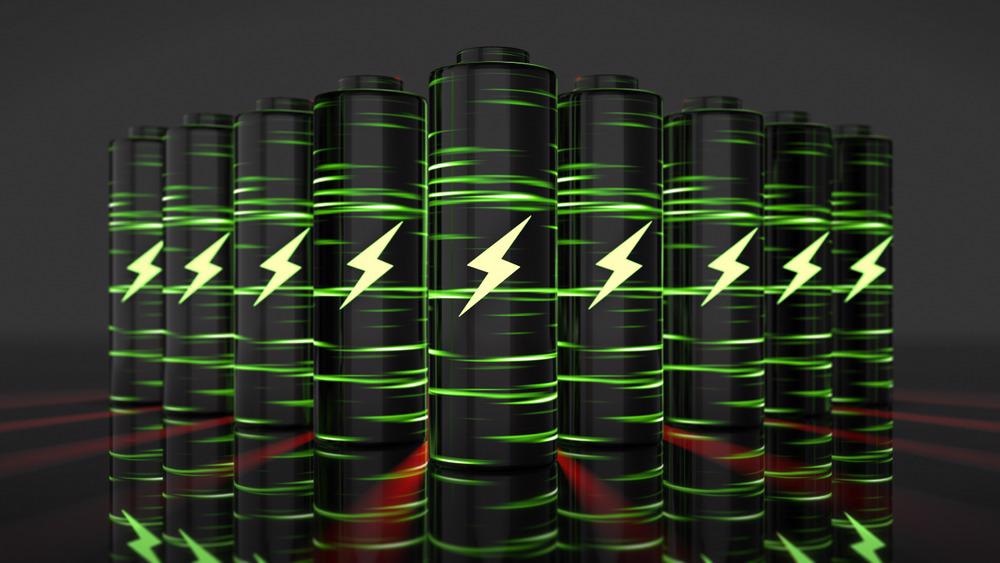The abundance, cost-efficiency, and higher experimental capacity of manganese-based oxides make them a promising anode material for next-generation lithium-ion batteries (LIBs). However, these LIBs’ rapid capacity fading and poor rate capability due to volume fluctuations during cycling impede their practical applications.

Study: Designing the Binder-Free Conversion-Based Manganese Oxide Nanofibers as Highly Stable and Rate-Capable Anode for Next-Generation Li-Ion Batteries. Image Credit: Immersion Imagery/Shutterstock.com.
In an article recently published in the journal of ACS Applied Energy Materials, the authors reported the fabrication of one-dimensional (1D) magnesium manganite (MgMn2O4; MMO) nanofibers with a high aspect ratio, which had morphological gaps and can be applied as binder-free negative electrodes for LIBs.
Anode Materials in LIBs
Global warming can be mitigated using renewable energy sources within the energy storage system. To this end, electrochemical batteries stand as promising energy storage devices. LIBs with longer cyclability, high energy density, lower self-discharge, no memory effects, and facile storage mechanisms are recognized as the most efficient energy storage technology.
Currently used LIBs need four to five-fold more energy density to meet the emerging industrial demand. Hence, there is a need for a new anode material with properties like high specific capacity, good working potential, long life span, high-rate performance, eco-friendliness, and cost-efficiency.
Although carbon is employed as an anode material due to the high working voltage, its high-end application is restricted due to its low insertion potential, lower experimental capacity, and inferior safety. Thus, there is an emerging need for alternative anode materials with enhanced reversible capacity, good cyclability, and high-rate performance.
MMO Nanofibers
In the present work, the authors synthesized 1D MMO nanofibers with morphological voids as binder-free anode materials for LIBs. The anode material was synthesized via the electrophoretic deposition technique (EPD).
The as-prepared anode material provides a well-designed network between the current collector and active materials, which enhances the energy density of LIBs. Moreover, the gaps between the inactive magnesium oxide (MgO) matrix and individual MMO nanofibers act as buffering spaces to accommodate the lithiation and delithiation volume variation.
The three-dimensional (3D) microstructure of synthesized electrode and 1D porous morphology of MMO are the main reasons for the excellent electrochemical performance of fabricated anode.
Research Findings
The field emission scanning electron microscope (FESEM) images of the MMO nanofibers showed the uniform and smooth surface of the nanofibers with diameters between 400 to 500 nanometers without bead formation. Thermal stability studies were employed to investigate the change in MMO nanofiber composition using thermogravimetric analysis (TGA). The initial weight loss of 8.9% between 24 and 280 degrees Celsius was associated with the loss of absorbed moisture, residual solvents, and captured water in the MMO nanofibers. Further, 25.8% at 365 degrees Celsius is associated with metal precursor and polyvinylpyrrolidone (PVP) decomposition.
The extreme weight loss at 365 to 400 degrees Celsius represents polymeric backbone removal from MMO nanofibers. The weight loss observed between 400 and 800 degrees Celsius corroborated the elimination of residues from as-prepared nanofibers. Moreover, the authors could obtain MMO in a pure phase at 500 degrees Celsius.
Energy-dispersive X-ray spectroscopy (EDX) results revealed good stoichiometry proportion and distribution of precursors like magnesium (Mg), manganese (Mn), and oxygen (O) throughout the MMO nanofibers. Furthermore, the X-ray diffraction (XRD) pattern of the MMO nanofiber revealed the characteristic peaks corresponding to the tetragonal MMO.
The porous surface of as-prepared MMO nanofibers was studied using the BET method’s nitrogen adsorption-desorption isotherms at 77 kelvin. The authors confirmed that the MMO nanofiber’s isotherm is analogous to a type-IV isotherm. The isotherm curve showed uptake of nitrogen at low pressure, which corroborated the microporous nature of nanofibers, and the power spectral density (PSD) curve validated the porosity of MMO nanofibers. The pores are centered at 1.82 nanometers, confirming the nanofiber’s microporosity.
Lithium (Li) Storage Properties
The MMO nanofiber’s extraordinary Li storage properties were explained by 1D MMO nanofibers with a high aspect ratio having morphological gaps between individual nanoparticles. The voids/gaps reduce the aggregation possibility of active material. The authors avoided the electrochemical inactive polymer binder in anode material synthesis to promote the charge transfer kinetics.
Moreover, the gaps on the surface of active electrode material enhance the Li-ion diffusion at the electrode and electrolyte junction. Furthermore, a small number of multiwalled carbon nanotubes (MWCNTs) introduced into the electrode material enhanced the adhesion and electrical conductivity.
Conclusion
To summarize, the authors fabricated 1D, porous, aligned MMO nanofibers with a high aspect ratio using an electrospinning technique. Further, they fabricated binder-free MMO nanofiber-based electrodes for LIBs via an eco-friendly EPD approach.
The EPD deposition voltage modifies the coated electrode’s microstructure and aids in enhancing Li storage properties. At 100 volts EPD voltage, the as-synthesized MMO nanofiber attained 3D porous morphology with voids/gaps, which allows the diffusion of Li-ion within the electrode materials during the lithiation and delithiation process.
Reference
Tandon, A., Rani, S., and Sharma, Y. (2022). Designing the Binder-Free Conversion-Based Manganese Oxide Nanofibers as Highly Stable and Rate-Capable Anode for Next-Generation Li-Ion Batteries. ACS Applied Energy Materials. https://pubs.acs.org/doi/10.1021/acsaem.2c00487
Disclaimer: The views expressed here are those of the author expressed in their private capacity and do not necessarily represent the views of AZoM.com Limited T/A AZoNetwork the owner and operator of this website. This disclaimer forms part of the Terms and conditions of use of this website.